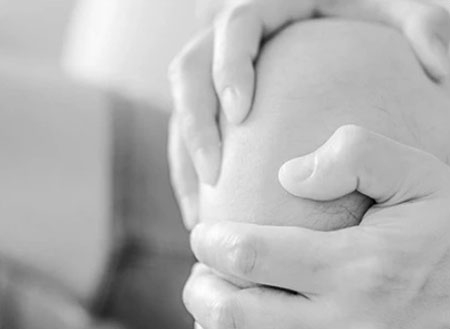
Arthritis is as legitimate of a diagnosis as any, but seems to come with such a negative connotation. Patients often scoff at the diagnosis and think that something else must certainly be wrong, but the reality is that arthritis can cause significant and debilitating pain depending on its severity. Different types of arthritis exist such as rheumatoid, psoriatic, and osteoarthritis. All three types create discomfort due to inflammation in and around joints all over the body.
Rheumatoid arthritis is an autoimmune disease where the body identifies the joints as an area that needs to be attacked; thus, beginning a general deterioration process if not managed. Psoriatic arthritis is a chronic inflammation in and around the joints often discerned by a rash, red skin and crumbling nail beds. Treatments for both rheumatoid and psoriatic arthritis lie outside the realm of orthopedic care and are handled by a rheumatologist.
Osteoarthritis is our specialty at Orthopaedic Associates of Wisconsin and is a common pathology, particularly amongst our older demographic of patients. The prefix ‘osteo’ means bone and the suffix ‘itis’ means inflammation; therefore, osteoarthritis is the inflammation of bony structures or joints. Arthritis is caused by general wear and tear on the joints and typically progresses over time. It can be worsened by trauma such as surgery, fractures, major injuries, repetitive movements, or excessive body weight. Sometimes the existence of arthritis is more genetic in nature. Often times, people are living with mild to moderate (or in some cases even severe) arthritis and remain asymptomatic. Osteoarthritis is confirmed by obtaining x-rays to assess the current joint spaces and bony structure.
Osteoarthritis has no cure and cannot be reversed, but that should not cause you any distress. A myriad of treatment options are available. Activity modification, weight loss, dietary changes, and over-the-counter non-steroidal anti-inflammatory drugs (or NSAIDs) and acetaminophen are typically our first recommendations for those whose arthritis is causing them discomfort. The next treatment options would include scheduled prescription-strength NSAIDs, physical therapy, and cortisone injections. The goal of all of these treatments is to decrease stress on the affected area, minimize inflammation, and strengthen the surrounding musculature that supports the joints. Another treatment option is a viscosupplementation injection. This fluid is hyaluronic acid, and it is injected similarly to cortisone. It is not an anti-inflammatory injection, but rather a lubricant injection to help the joint move with less friction, which in turn hopefully provides some relief of symptoms.
The ultimate solution for those struggling with the pains of osteoarthritis is a total joint replacement. This is a major surgery with a high success rate. If conservative management of symptoms has been exhausted, our recommendation is often to undergo a replacement of the symptomatic joint. Our office can replace knees, hips, shoulders, elbows, ankles, great toes, and fingers. A joint replacement involves removing the arthritic portion of the bone and replacing it with a synthetic component that returns a smooth surface to the joint once again.
If you find yourself struggling with joint pain that is affecting your daily life, call our office at 262-303-5055 extension 3000 to make an appointment with one of our board-certified specialists so we can get you back to active, healthy living once again!
This blog is written by one of our very own-Morgan. She is a certified athletic trainer working as a medical assistant with our providers each and every day in our clinic. She obtained a bachelor's degree in athletic training from Carroll University in Waukesha and a master's degree in Kinesiology from Michigan State University. She is excited to bring you updates and information about the happenings at OAW.

